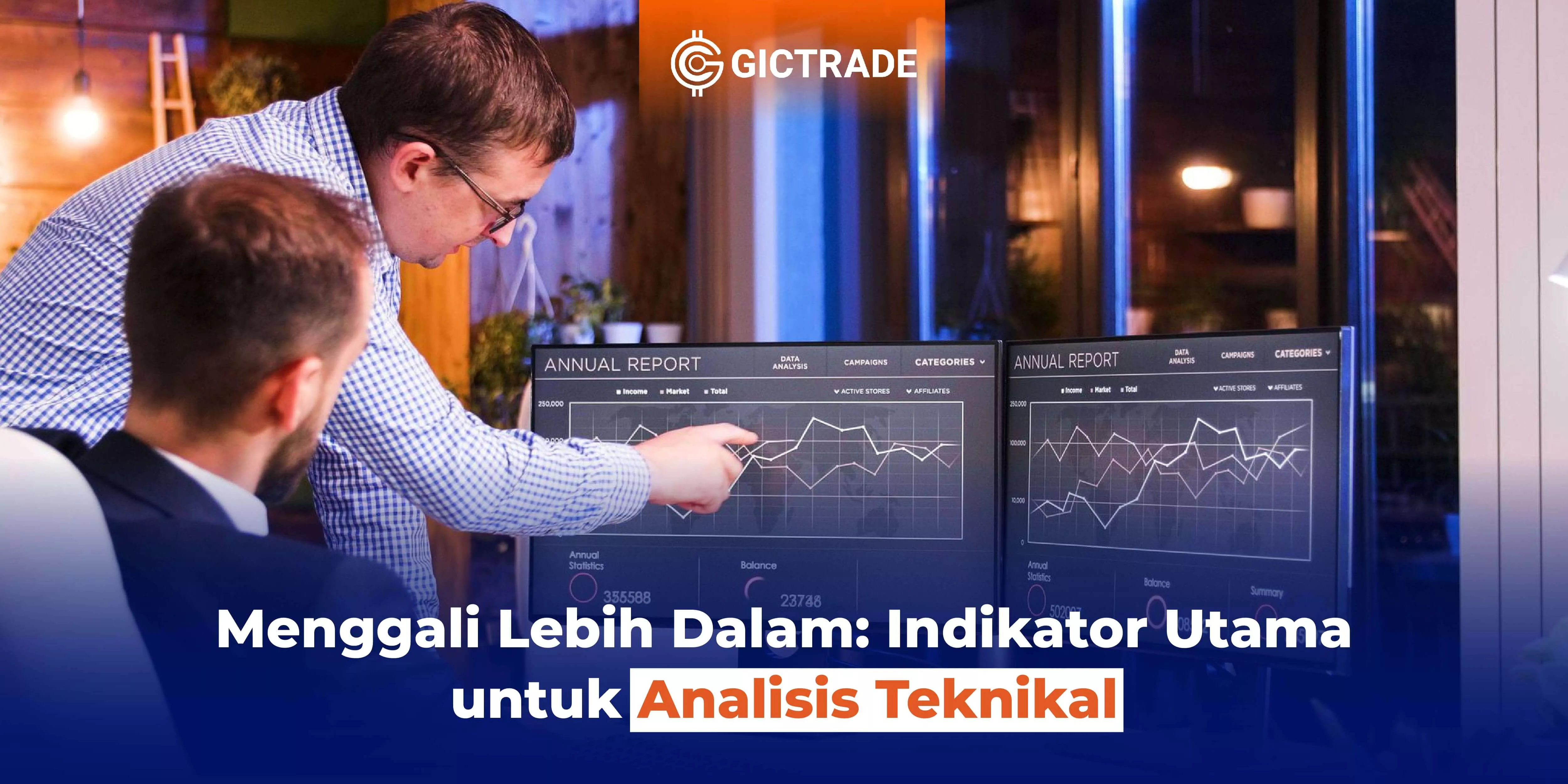Stock trading is an activity that requires a deep understanding of the financial market and its trends. One of the essential tools in technical analysis is the Leading Indicator for Technical Analysis.
In this article, we will delve deeply into the concept and application of this indicator, offering insights based on our direct experience and knowledge.
Table of Contents
- Leading Indicators for Technical Analysis: What Are They and Why Are They Important?
- Types of Leading Indicators for Technical Analysis
- FAQ (Frequently Asked Questions)
- Do I need to be an expert in mathematics to use technical indicators?
- How many indicators should be used in one analysis?
- Can key indicators be used for short-term trading?
- Can I rely exclusively on key indicators?
- Are indicators always accurate in predicting price movements?
- Can I rely on indicators during highly volatile market conditions?
- Conclusion
Leading Indicators for Technical Analysis: What Are They and Why Are They Important?
Leading Indicators for Technical Analysis are tools used by traders to analyze stock price movements and identify market trends. Their main function is to assist traders in making more informed investment decisions. By utilizing historical stock price data, these indicators help identify specific patterns that can predict the direction of future price movements.
.webp)
Why Are Leading Indicators Important for Technical Analysis?
Leading indicators help traders identify opportunities and risks in stock trading. By understanding the trends and signals generated by these indicators, traders can make more confident and accurate decisions. This also helps reduce the level of uncertainty in investment decision-making.
Types of Leading Indicators for Technical Analysis
There are various types of leading indicators used in technical analysis. Each indicator has a different approach and purpose. Here are some commonly used leading indicators:
1. Moving Average (MA)
Moving Average (MA) is one of the most basic and popular technical indicators used in technical analysis. This indicator calculates the average stock price over a specific period. There are two types of MA commonly used:
- Simple Moving Average (SMA): Calculates the average price by adding up the closing prices over a specific period and dividing by the number of periods.
- Exponential Moving Average (EMA): EMA gives more weight to recent prices, making it more responsive to recent price changes.
Moving Average helps traders identify market trends in both the long and short term. If the price moves above the MA, this can be a sign of an uptrend, while if the price moves below the MA, it can indicate a downtrend.
2. Relative Strength Index (RSI)
Relative Strength Index (RSI) is an indicator that measures the speed and change of stock prices. RSI provides a scale from 0 to 100, with values above 70 indicating that the stock may be overbought (too high), while values below 30 indicate that the stock may be oversold (too low).
RSI helps traders identify overbought or oversold market conditions, which can give hints about possible trend changes. However, it’s important to note that RSI can also remain in overbought or oversold conditions in strong trends.
3. Moving Average Convergence Divergence (MACD)
- When the MACD line crosses the signal line from below, this can be interpreted as a buy signal.
- Conversely, if the MACD line crosses the signal line from above, this can be interpreted as a sell signal.
MACD also has a histogram that shows the difference between the two lines.
4. Bollinger Bands
Bollinger Bands are an indicator that helps measure stock price volatility and identify support and resistance levels. This indicator consists of three lines: the middle line (Simple Moving Average), and two bands that move above and below the middle line, based on price volatility.
Bollinger Bands can help traders identify when stock prices are at extreme levels and when prices may potentially reverse. When the price approaches the upper band, this can be a sign of overbought, while when the price approaches the lower band, this can be a sign of oversold.
5. Stochastic Oscillator
Stochastic Oscillator is an indicator that helps identify market momentum by comparing the closing price to a certain price range. This indicator also produces values from 0 to 100, with values above 80 indicating overbought conditions, and values below 20 indicating oversold conditions.
Stochastic Oscillator can provide buy or sell signals when the %K line crosses the %D line. This indicator also helps traders identify divergences between price and the indicator, which can be a hint of trend changes.
Here is a comparison table of some commonly used leading indicators:
Using Key Indicators for Technical Analysis in Practice
In practice, traders combine several key indicators to get a more complete picture of market conditions. For example, they might use a combination of Moving Averages and RSI to identify trends and potential reversals.
It's important to remember that no single indicator can provide perfect signals. The key to success in technical analysis is to combine various indicators and understand how they interact with each other.
Learn Technical Analysis in Trading with the Experts, Become a Successful Trader at GIC Now!
Not Familiar with GIC? Let's Get Acquainted.
Unlike other conventional brokerage firms, GIC, through the GICTrade platform, provides solutions for traders who do not want to be burdened with high trading costs. GICTrade is a peer-to-peer trading platform that connects traders with market makers.
So, what makes GICTrade special? As a platform that brings together traders and market makers, you as a prospective client can choose between the two roles: either becoming a trader or a market maker.
GICTrade’s role as a transaction facilitator minimizes costs and helps maximize profits for both traders and market makers, creating a fair trading environment and results.
Traders will benefit from the absence of commission fees and swap fees, as well as low spreads due to the presence of market makers providing liquidity. You can also join the GICtrade trader community on Telegram to ask fellow traders about their trading experiences.
Follow GIC on Instagram to get information about webinars and various exciting prizes. Additionally, on GIC's YouTube channel, traders can also learn trading for free! So what are you waiting for? The features supporting you to start investing and trading forex through GIC are comprehensive. Make your transactions simpler, safer, and more profitable.
FAQ (Frequently Asked Questions)
Do I need to be an expert in mathematics to use technical indicators?
No, you do not need to be a math expert. Most trading platforms provide tools to automatically calculate and display indicators.
How many indicators should be used in one analysis?
Can key indicators be used for short-term trading?
Yes, some indicators are suitable for short-term trading, such as Stochastic and MACD. However, it is always important to understand the overall market context.
Can I rely exclusively on key indicators?
Not recommended. Indicators are just tools, and it is important to combine them with other analyses, such as fundamental analysis.
Are indicators always accurate in predicting price movements?
No, indicators can also provide false signals. Therefore, it is always necessary to consider other factors before making decisions.
Can I rely on indicators during highly volatile market conditions?
In highly volatile market conditions, indicators may not always be accurate. It is advisable to combine technical analysis with good risk management.
Conclusion
Key Indicators for Technical Analysis are essential tools in stock trading. By understanding the types of indicators and how to use them, you can enhance your investment decisions.However, remember that technical analysis is just one aspect of investment decision-making. Combine it with fundamental analysis and prudent risk management for better results.
| Also Read : Building a Solid Trading Plan |
 Last:
Last: 







